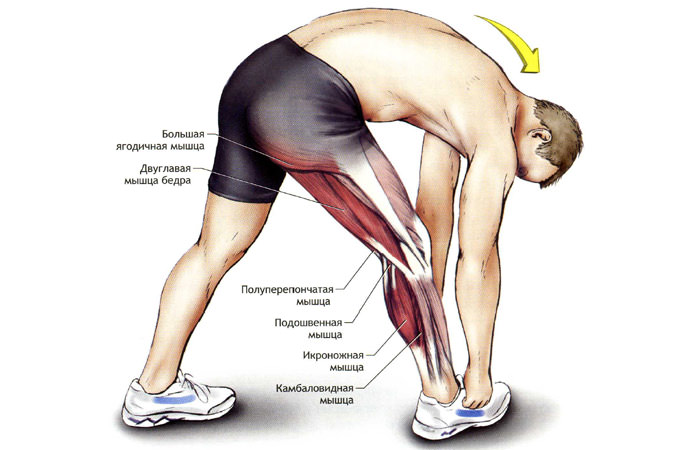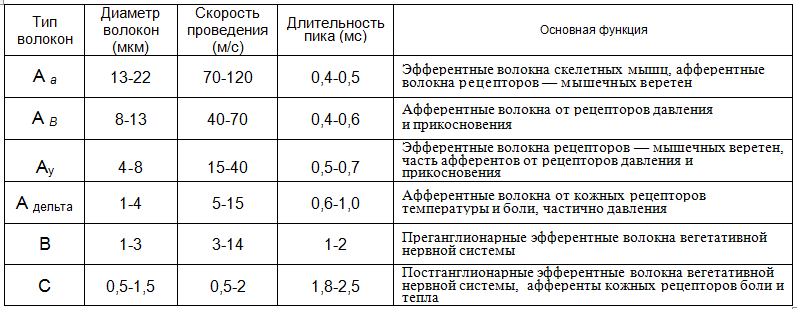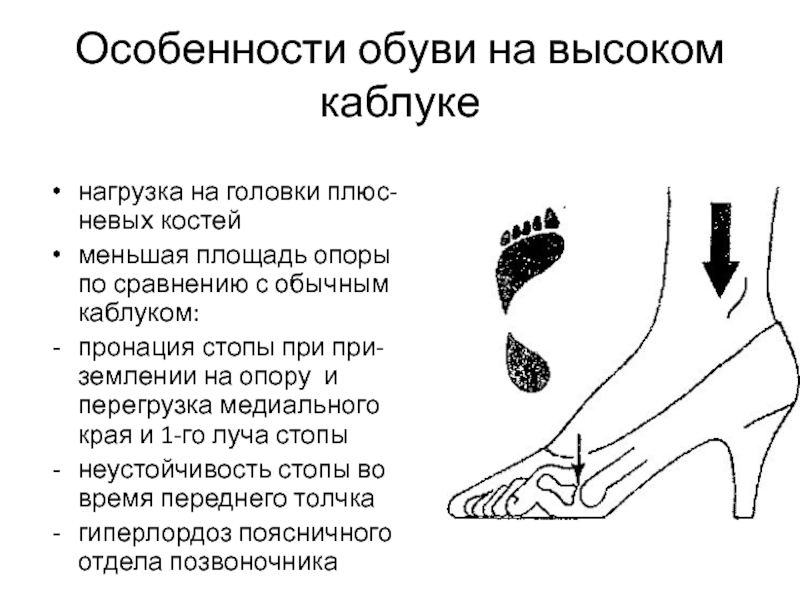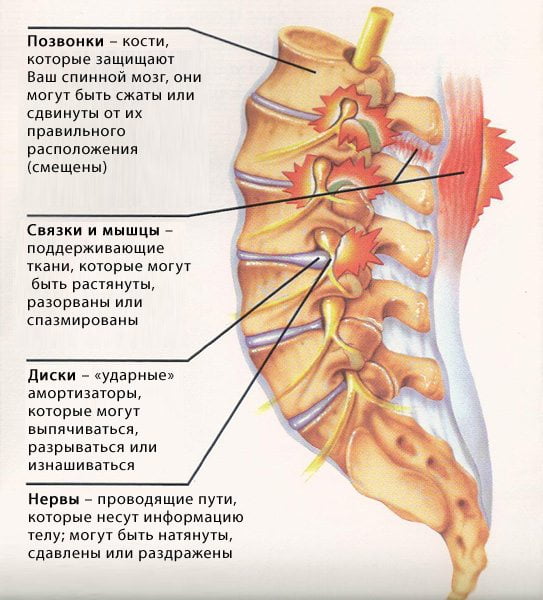The complex is assembled by a sports physiotherapist
- What is foot pronation?
- types of pronation
- hyperpronators
- hypopronators
- Neutral pronation
- Inappropriate footwear
- injuries
- External
- glutes
- Large
- Middle
- Small
- Twins
- muscles and nerve bundles
- sneakers and pronation
- Pronation – Insole selection
- Neutral pronation
- hypopronation
- The downside of flatfoot: supination and arched foot
- How do I choose the right shoes?
- Insoles and running shoes for flat feet
- Insoles for runners with hyperpronation
- How can pain in the hip joint be examined?
- Causes, symptoms and diagnosis of hip joint disease
What is foot pronation?
Foot pronation is a way of moving the outer part of the foot. Pronation is a mechanism that protects not only the joints but also the internal organs from impacts that can cause injury. To reduce stress, the arch of the foot flattens as it makes contact with the ground.
Among the biomechanical processes occurring in a runner's limbs, pronation and supination of the foot are the most important. Pronation can be defined as the foot's ability to rotate inward during movement. The movement opposite to pronation is called supination. Supination controls outward rotation of the limbs, and pronation controls inward rotation. The muscles that rotate the foot outward are called supinators and those that rotate the foot inward are called pronators.
Pronation and supination affect both running technique in particular and leg health in general. Correct determination of the type of pronation will help when choosing footwear for sports activities and creating a training program that will bring maximum benefit. Pronation and supination ensure that the athlete does not lose balance both when pushing off and when landing.
Pronation should not be viewed as a single movement. There are 3 simultaneous movements:
The concepts are deciphered as follows:
Pronation is important when landing on the heel. By observing the movement of the limbs, it is easy to understand a step cycle that consists of 2 phases: transfer and sustain.
types of pronation
There are 3 main groups of people with the following types of pronation:
A foot deviation greater than 4 degrees is an anomaly that results in changes in musculoskeletal function. This condition poses a risk of injury due to unfavorable load distribution. The affected person cannot fully exploit his or her physical abilities.
hyperpronators
The foot is characterized by a reduced longitudinal arch, resulting in reduced cushioning. Due to the stretched position of the ligaments, the coefficient of free movement is small. Muscle weakness occurs, which contributes to the development of flat feet and increases the load on the spine and knees.
hypopronators
The main feature of the foot is a lack of flexion, which leads to insufficient cushioning and leads to frequent injuries. In the first phase of locomotion, the shin is pushed outwards instead of inwards, and the foot rests on the outside edge instead of being supported by the arch. The person is unable to shift their body weight onto the arch of the foot, which is popularly referred to as 'clubfeet'.
Neutral pronation
When running, the outer part of the heel is in contact with the ground. The foot rotates within 15 degrees and is in full contact with the ground. So the body weight can be carried effortlessly, which is the effect of cushioning pronation. Slight support is necessary for neutral pronators. The end of the cycle is marked by an even push-off of the forefoot.

Inappropriate footwear
Good footwear supports the arch and soft tissues of the foot, which protect the foot from injury. This is especially important when walking on hard, level ground.
Incorrect footwear -- like stiff or tight shoes -- can lead to supination and other foot problems. Wearing shoes that are worn or that do not support the arch of the foot also causes supination.
When the body is not properly aligned, certain parts of the body have to work harder to maintain posture and balance. Likewise, poor form during exercise can lead to overcompensation of certain muscles and bones, resulting in supination.
injuries
Old injuries can cause instability and weakness in the bones and soft tissues of the body. For example, people with Achilles tendonitis are particularly at risk of becoming supinated.
Other factors that can lead to supination include
- a sedentary lifestyle
- constant walking on hard and rigid ground
- limited range of motion
- long standing
- Joint stiffness due to aging or arthritis
- too heavy a load
External
The outer group or the outer muscles of the pelvis form the gluteal region.
glutes
They are very large fibrous muscle bundles. They are responsible for walking upright and walking on two legs. Another important task is to straighten the hip joint after flexion. The glutes of the pelvis include three muscles.
Large
Very large, at least 2 cm thick. It has the shape of a flat rhomboid. It is composed of many bundles. He has several starting points:
It performs several important tasks and allows you to:
- to keep the torso upright;
- to rotate the thigh outward;
- to bend the leg at the hip;
- raise the body from a lying position.

The size of this muscle has a direct impact on the size of a person's buttocks. It is part of the superficial muscle layer.
Middle
Lies under the covering layer of the vastus muscle. It's a bit weaker, but quite thick with bundles in two layers. Looks like an irregularly shaped triangle. The wide part of this triangle attaches to the crestal part of the ilium and with its upper acute angle to the femur near the greater trochanter.
It is involved in the inward and outward rotation of the trochanter. Together with the small and the large, it helps to keep the torso upright.
Small
It looks very similar to the middle one but is much thinner and single layer. It is attached to the same bones as the middle one and complements its function.
Twins
Upper and lower twin. The upper twin is similar in shape to the drive belt; it begins at the ischium and is anchored at its end in the acetabulum of the trochanter. It acts as an inner seal and adheres tightly to it.
The inferior ligament is similar in appearance to the superior ligament. The inferior ligament attaches to the seat bones. And like its upper twin, it attaches to the trochanteric fossa. In conjunction with the other muscles, they rotate the hip outwards.
muscles and nerve bundles
The pelvic muscles are criss-crossed by a large number of nerve endings, veins and vessels. They work closely together and have increasingly similar names. Several muscles pass through several nerves at the same time, as the table illustrates well.

The muscular girdle of the pelvis borders and is connected to the muscles of the following groups:
If one of the joint bones of the pelvis and hip is broken, pronation and supination cannot be performed or cannot be performed correctly. This is one of the main symptoms of a hip fracture.
When the abdominal and back muscles are underdeveloped, the pelvic muscles take the brunt of standing upright. Therefore, getting up from a seated position on the floor without the help of your arms puts a lot of stress on the hip joint.
sneakers and pronation
When looking for suitable running shoes, it makes sense to first determine what position our foot is in. This can be neutral, pronation or supination. The former is characterized by a well-shaped rearfoot, where the weight of the body is evenly distributed from the toes to the heel. Excessive internal deflection of the ankle relative to the tibia is indicative of foot pronation, which is often associated with low foot height and a tendency to flat feet, a very common deformity in which the arch of the foot is lowered or disappears altogether.
Pronation requires properly fitted running shoes, otherwise it can lead to pain in the feet, ankles or knees or even in the hip or lumbar spine. People with excessive pronation often complain of shin splints and overuse of the anterior tibialis muscle. You need shoes that are specially reinforced on the inside (e.g. with hard foam).

Runners with excessive supination, ie high arches and too much tilt of the ankle relative to the shin, have a higher risk of ankle sprainsThe trainer is recommended for high cushioning, reduced cushioning and overloading of the hip and shin joint during sports. Sneakers with high cushioning and a well-stabilized upper are recommended.
Pronation – Insole selection
Pronation or supination of the foot can be corrected with appropriate foot muscle exercises and correct running technique (first contact with the ground should be with the flat foot). Sometimes it is also advisable to wear pronation inserts, which ensure correct foot alignment by supporting the outside of the foot.
Pronation of the forearm and hand is less common than that of the ankle. Excessive pronation can cause what is known as tennis elbow, among other things. Characteristic of this is the sensation of pain when flexing the extensor muscles of the wrist at their proximal point of attachment, the lateral epicondyle of the humerus. Sometimes it radiates to the lateral epicondyle or wrist.
Neutral pronation
Neutral pronation is the normal position of the foot when running. In this case, the runner lands on the outside of the heel. The foot then rotates inward about 15 % of its original position. This leads to full contact of the foot with the ground. The runner's body is stabilized, the body does not wobble. The correct curvature of the foot ensures optimal load distribution. The push-off at the end of the run is from the front of the foot:
hypopronation
In hypopronation, the arch of the foot curves forward. The ligaments are in increased tone, resulting in stiffness and incomplete flexion of the foot. The opposite of hyperpronation is deficient pronation. However, the appearance of these anomalies is the same: insufficient damping. During pronation, the tibia tends to rotate outward. The outermost edge of the foot serves as a support point. In eversion, the foot rotates less than 15 %. In the supination phase, the kick is performed with the last toe:
This movement of the foot and shin as you run puts you at risk of fractures and other injuries related to the uneven distribution of loads.
The downside of flatfoot: supination and arched foot
Supination is as natural and necessary in walking and running as pronation. It is the second phase of the step cycle, in which the center of gravity shifts forward and the foot pushes off the surface. Only the outer, lateral edge of the foot is in contact with the ground.
Like hyperpronation, excessive supination causes a range of problems: from discomfort and pain in the arch and ankle area when walking to musculoskeletal problems. Excessive supination can be recognized by the deformation of the shoe, which wears out quite quickly towards the outer edge and takes on a banana-like curvature.
This deformity occurs most frequently in so-called pes cavus – with a very high longitudinal arch. The high arch not only makes it difficult to fit shoes, but also leads to abnormal load distribution, pain and instability in the ankle. The pain can occur not only when walking, but also when standing. The condition can occur at any age, on one or both feet.
The symptoms of pes cavus can be identified with a simple test: stand on a piece of paper with wet feet and assess the resulting contour of the sole of the foot. If the arch between the arch of the foot and the heel is too big or not there at all, it is a case of a hollow foot. In this case, a visit to the podiatrist is necessary to determine the cause of the pathology (hereditary or caused by a neurological disease) and identify risk factors for possible complications. For this purpose, a functional diagnosis and an assessment of the biomechanics of the foot are carried out.
In addition to the high vault and the above-average vaults, there are other symptoms that point to these
indicate this pathology:
- Hammer or clawed toe deformity;
- Callus formation especially at the base of the big toe or little finger and on the
callus formation mainly at the base of the big or little toe, but also on the heel and on the outside of the foot; - sometimes severe or sudden pain in the area of the forefoot, heel and calf
both standing and walking; - frequent dislocations of the ligaments of the ankle;
- tendency to fall.
How do I choose the right shoes?
The most important criterion when choosing shoes is the comfort of the feet in all movements. Shoes that are too wide are just as unhealthy as shoes that are too tight. It is better to choose shoes with an insole, which is also mandatory for children's shoes. Use orthopedic insoles, especially if you are on your feet for a long time.
Pay special attention to shoes for active people, including running shoes. Don't forget to consider a few things. First, determine exactly what kind of load the shoes need to withstand. Second, try to correctly determine your pronation type. Each type corresponds to a different class of athletic shoes. For example, you should choose shoes from the 'Support' class for normal pronation, shoes from the 'Control' class for flat feet and shoes from the 'Neutral' class for hypopronation (clubfoot).
Today, manufacturers make it easier to choose sports shoes, because large companies conduct their own research in this area, taking into account all types of pronation. These include Mizuno, Asics, Salomon, Saucony, Brooks and others.
Do you doubt the need to buy branded shoes? It doesn't have to be. Uncorrected shoes with pre-existing problems can cause discomfort and pain when running and make the situation worse. This negatively affects both your performance and your health. Don't ignore our advice, take care of your health and perform at your best anytime, anywhere.
Read lots of useful running tips and advice on our Telegram channel.
Join the running chat too – you can exchange ideas and ask questions there!
Insoles and running shoes for flat feet
Misalignment of the ankles can cause pain in the knees and back, periosteum, and Achilles tendon. Insoles and running shoes for flat feet are designed to support the body in disrupting its natural cushioning. Roughly speaking, hyperpronation insoles and sneakers are crutches for runners. They don't heal, but they help prevent more serious injuries.
To correct abnormalities, you should perform special exercises to strengthen your feet.

Insoles for runners with hyperpronation
If you don't want to change your favorite running shoes, you should find the right insoles for your foot. It is best to order custom-made insoles. Don't forget to tell your doctor that you plan to use them for running.

In some cases, foot abnormalities can only be corrected with surgery. Consult an orthopedist to determine the extent of the abnormality and choose treatment.
How can pain in the hip joint be examined?
The hip joint is a multiaxial articular structure formed by the femoral head and acetabulum that allows movement in multiple axial directions:
- The flexion and extension of the joint is possible via the frontal axis;
- The sagittal axis allows for lateral movement of the joint and recovery;
- Pronation and supination of the hip, ie outward flexion and rotation, are permitted through the vertical axis.
Circumferential rotation of the hip is possible thanks to the spherical surface, the anatomical structure of which resembles a joint mechanism.
The main difficulty in clinical pathology of the hip joint is the similarity of pain symptoms with other reactive conditions in vital organs, such as pain in the leg, lumbar region or sacroiliac joint.

There are a few simple tests that can be used to determine if you have hip problems:
- While lying on your back, bend your leg at the knee. With increased pressure on the knee joint inward on the surface of the thigh, you may feel a sharp pain in the groin, which indicates a dysfunction of the hip joint. As the hip rotates inward, the pain symptom increases as it impacts the anterior aspect of the hip joint.
- Strong pressure is applied by placing the back of the hand in the groin area. If there is a clinical pathology in the joint, it causes acute pain.
- Trochanteritis of the hip joint is suspected and when the trochanter is squeezed, the hip joint responds with a sensation of pain.
Causes, symptoms and diagnosis of hip joint disease
Causative factors in the pathologic history of the hip joint
- Mechanical damage to the articulated segments;
- Genetic predisposition to hip joint disease;
- dysfunctions caused by infectious lesions;
- Systemic connective tissue diseases;
- Disorders of joint integrity due to degenerative-dystrophic transformation.
- Acute, nagging, or nagging pain in the inner or outer thighs and/or groin;
- Impaired mobility, limited range of motion;
- Dermatitis with subfebrile fever.
Disease of the hip joint can be correctly diagnosed with a good biochemical examination and instrumental diagnostics, taking into account modern research methods:
Treatment of the most common clinical anomalies of the hip joint.
Scientifically proven therapeutic exercises

Train when you want and where you want.
- for rehabilitation of the wrist and forearm after injury;
- for rehabilitation after operations;
- for muscle, tendon and ligament injuries;
- for chronic pain and cramps;
- in tendinitis and tendinopathies;
- sprains and subluxations;
- in synovitis and bursitis;
- osteoarthritis;
- Fractures of the radius, ulna, metacarpal, wrist;
- other injuries and pathologies.
We strongly recommend that you consult a physical therapist or an LFC specialist before starting any exercise to insure against unacceptable strain, avoid possible complications and reduce the risk of re-injury.
Read more:- pronation and supination.
- What is pronation and supination?.
- Pronation and supination in anatomy.
- How to determine the type of pronation.
- pronation.
- hip pronation.
- Sneakers with hyperpronation.
- These are the pronator muscles.
